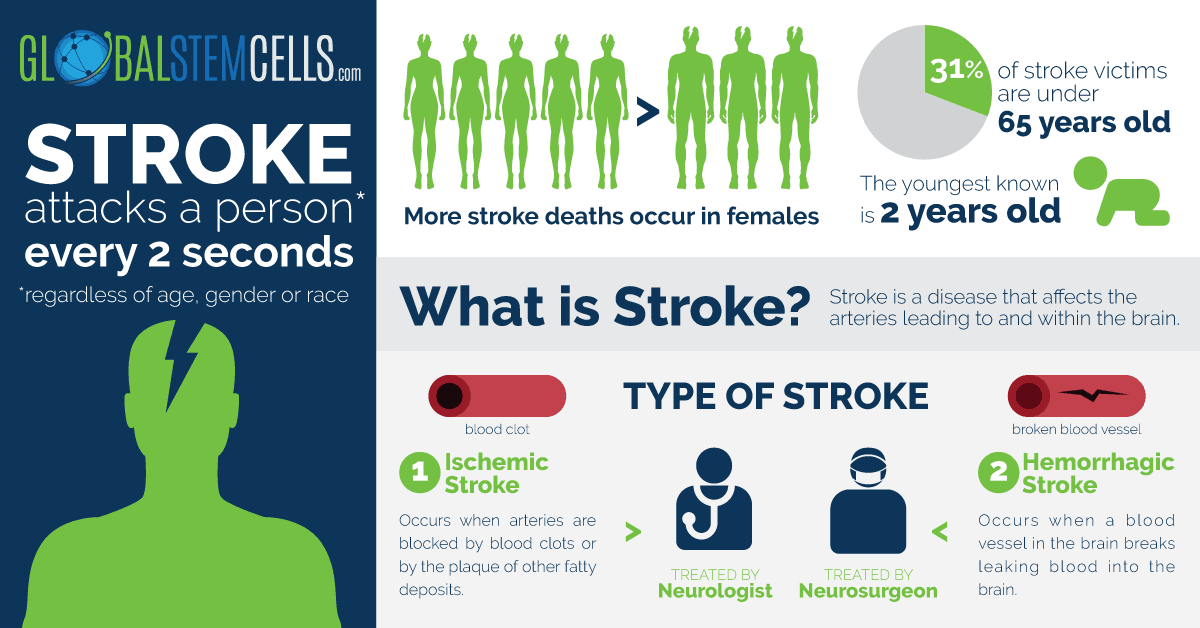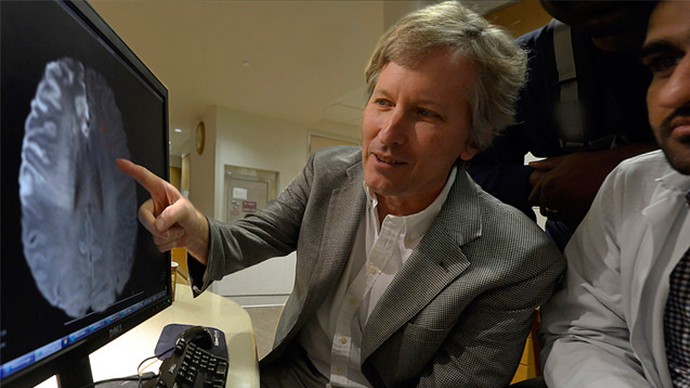A Stroke occurs when the flow of oxygen-rich blood to a portion of the brain is blocked. Without oxygen, brain cells start to die after a few minutes. Sudden bleeding in the brain also can cause a Stroke if it damages brain cells. Stroke is a leading cause of long-term disability and the leading preventable cause of disability.
Different Types of Stroke
Strokes are categorised into two major categories: Ischemic and Hemorrhagic. Ischemic Strokes are caused by interruption of blood supply, while Hemorrhagic Stroke s are the ones which result from rupture of a blood vessel or an abnormal vascular structure.

If brain cells die or are damaged because of a Stroke, symptoms occur in the parts of the body that these brain cells control. Examples of Stroke symptoms include paralysis or numbness, sudden weakness and paralysis. Some people may even develop eye problems and slurry or distorted speech.
Stem Cell Treatment for Stroke
Stem cells have the capability to self-renew meaning that they can reproduce themselves many times over. Stem cells are found in the bone marrow, the lungs, the brain among other organs in the body. These cells are our repair kits as they regenerate cells damaged by disease and injury.
It has always been believed that if a Stroke causes damage to the brain, that damage was irreversible. With technological breakthrough, the re-growth of brain cells is now possible and is offering new hope to Stroke victims.
The patient’s own Stem Cells are harvested, activated and put back in the body. These pluripotent Stem Cells then differentiate and migrate to the brain and begin to re-grow as brain cells.
In the clinical trial carried out at the Department of Neurology at the Medical College of Georgia the treatment using Stem Cells did not cause any strong immune reactions in recipients, even those who were unrelated to the donor cells.
The patients in the test showed remarkable improvement in their motor functions, and in the other symptoms associated with a sustained Stroke.
The researchers reported that the treatment may not significantly improve the recovery of patients within the first three months. It does however provide evidence that giving the therapy early within the first 36 hours after Stroke symptoms occur may enhance physical recovery. This treatment reduces the high risk of infections and these benefits continue to benefit the patient months down the line after its administration.
Adult Stem Cells are scalable and require no tissue typing make it a potentially widely and rapidly available therapy for Stroke patients. These cells are harvested, isolated treated and banked, ensuring that they are available when needed. One donor of these cells may provide hundreds of thousands of doses to patients.
Stem Cell Research has come a long way, and in future it is likely that Stem Cell Therapy in the treatment of Stroke patients will be used in addition to other proven treatments once they have been approved for general use in medicine.
If you would like anymore information about the use of stem cells in Stroke treatment, don’t hesitate to contact us.




 English
English